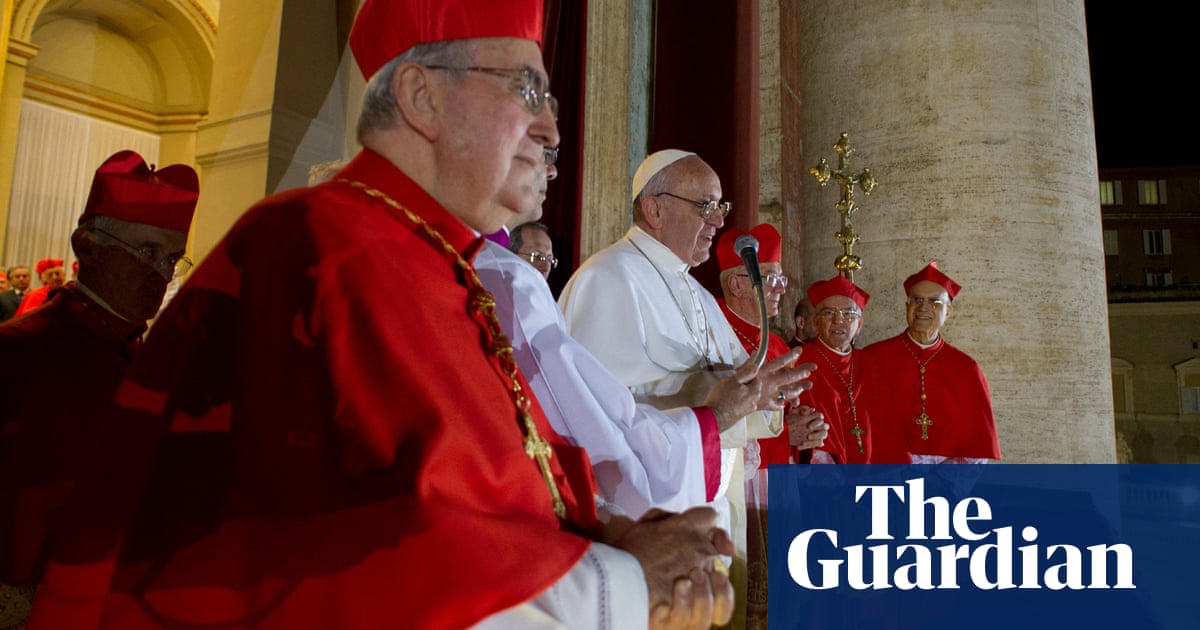The next pope will be chosen by the College of Cardinals, the Catholic church’s most senior figures appointed by the pontiff, who will make their way to Rome in the next few days for the conclave. The name comes from the Latincum clave, meaning “with key”, indicating the closed process of electing a pope.
There are more than 220 cardinals from more than 70 countries, but only about 120 are cardinal electors (those over the age of 80 are excluded). Two-thirds of the cardinal electors have been chosen by Francis in the past 10 years and largely reflect his vision of a more inclusive church.
Once the cardinals are assembled in Rome, usually 15-20 days after the pope’s death, they gather under Michelangelo’s magnificent painted ceiling in the Sistine Chapel to begin their deliberations. After the wordsextra omne– everyone out – are declared, referring to all but voting cardinals and a handful of officials and doctors, the doors are locked.
The cardinals swear an oath of absolute secrecy, and are permitted no contact with the outside world for the duration of the election process. Their phones are removed, and no newspapers, television, letters or messages are allowed. The chapel is also swept for listening devices before and during the conclave.
The cardinals sleep and eat in a purpose-built hostel, St Martha’s house, near the Sistine Chapel, wherePope Francishas lived for the past 12 years.
The conclave begins with a celebration of mass, after which deliberations and voting begins. Votes are taken each day, morning and afternoon, until a candidate wins a two-thirds majority. There is a day’s break for prayer and reflection after every seven ballots. If there is no conclusive result after 30 ballots, a candidate will be elected on a simple majority. The longest papal conclave in recent history was 1922, when the cardinals took five days to choose their new leader.
Any baptised male can be elected as pope, although a serving cardinal is invariably chosen. Each elector is given a ballot card with the wordseligo in summum pontificem(I elect as supreme pontiff) printed at the top. They insert the name of their choice, fold the card and drop it into a chalice.
The ballot is secret, but that does not mean the process is immune from factionalising, intrigue and lobbying.
After each round of voting, the ballot cards are burned. Chemicals are added to make the smoke black or white. Black smoke emerging from the 60ft chimney indicates an inconclusive ballot; white smoke announces to the world that a new pope has been elected.
The successful candidate is asked if he accepts election and, if so, which name he chooses to take as pontiff. The cardinals pledge obedience to the new pope, who is led into the adjacent Room of Tears to be dressed in a white cassock and skull cap, and red slippers. Three sets of vestments in different sizes will have been made by Vatican tailors in advance.
The dean of the cardinals steps on to the main balcony of St Peter’s Basilica, in front of which thousands of Catholic devotees and tourists will be gathered. The dean will declare: “Annuntio vobis gaudium magnum: Habemus papam” – “I announce to you with great joy: We have a pope.”
